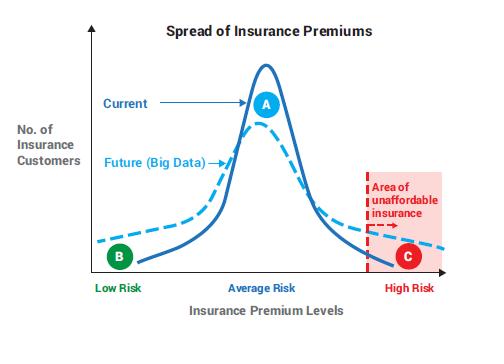
Interview with Michalis Michael, the CEO of DMR
1) By what percentage is Big Data expected to grow in the next few years – and what will that mean in terms of data gravity for the insurance industry?
According to a market survey report from Statista, the total amount of data being consumed globally in 2021 was 79 zettabytes – a figure that is projected to grow to over 180 zettabytes by 2025. It also reported that the installed base of storage capacity will increase at a compound annual growth rate of 19.2% from 2020 to 2025.
Unstructured data from all consumer interactions with an insurance company and Internet of Things (IoT) devices will represent the bulk of the data available to use.
This means that current customer experience management (CXM) programmes can be dramatically improved by adding analytics on all customer interactions with a brand/company via call centres, private chat messages, and emails, as well as external data such as social media posts in any language. Even if the analyst does not speak a certain language the AI will be able to provide actionable information in her/his native language or in English.
2) What are the main elements driving the increase in Big Data in the insurance industry – and why?
IoT data – for example from wearable devices which measure biometrics or smart car devices that measure driving behaviour – will become standard for the insurance industry since they promote forecasting accuracy and competitiveness which is articulated in a given customer’s insurance premium.
3) Will an increase in Big Data negatively or positively affect the insurance industry?
The impact will be largely positive due to improved forecasting models. The data available currently and in the future is an actuary’s dream.
4) How can companies effectively aggregate their data to maximum effect? Which technologies are proving most effective in terms of handling the data surge? Is edge computing the answer, for example?

We’re going to see rapid changes in data processing in the coming years in order to address this very issue.
Gartner has laid out the figures here quite starkly: they claim that although approximately 10% of enterprise-generated data is processed beyond run-of-the mill data centres or cloud, this figure will become 75% by 2025.
Clearly, cloud isn’t going to be sufficient to store and use the massive amounts of data produced by the likes of IoT devices at the edge of the network – we’re already seeing network bandwidths struggle to keep up.
Similarly, data centres aren’t always going to provide sufficient response times and transfer rates, which present an array of issues for umpteen applications.
As such, the answer will indeed be decentralisation in the manner promised by edge computing, as physical proximity to ‘edge of network’ devices will only become more essential to combat their huge data consumption.
5) With the implementation of smart cities, are these increased amounts of data collection something we should be cautious about in terms of privacy for individuals and security, given the rising number of cyber-attacks and breaches?
A big part of data privacy conversations is getting permission from individuals to make their personal data available.
There is definitely a heightened awareness about information security which we frequently see at an organisational level. We experience a way longer sales cycle of CXM programmes, for example, because of information security protocols. As a rule, we have to abide by certain global security standards (e.g. ISO27001 and 27002) and we have to accept independent penetration tests (by companies that effectively try to hack our SaaS platforms) for our listening247 and communities247 services.
This helps us fix vulnerabilities that could lead to data breaches.
6) How do you see the future of Big Data developing in the insurtech space?
The biggest paradigm shift is happening due to AI’s increasing ability to accurately annotate and analyse unstructured data (which make up more than 95% of all data ever recorded in human history).
Unstructured data are the opposite of numbers in tables – they are mostly text and audio but also images and video.
One area that is already greatly impacted by unstructured data is CXM. Now, a company can know everything any customer has ever said to them (and in any language) and thus successfully design and implement customer service workflows and scripts.
Share on FacebookShare on TwitterShare on Linkedin